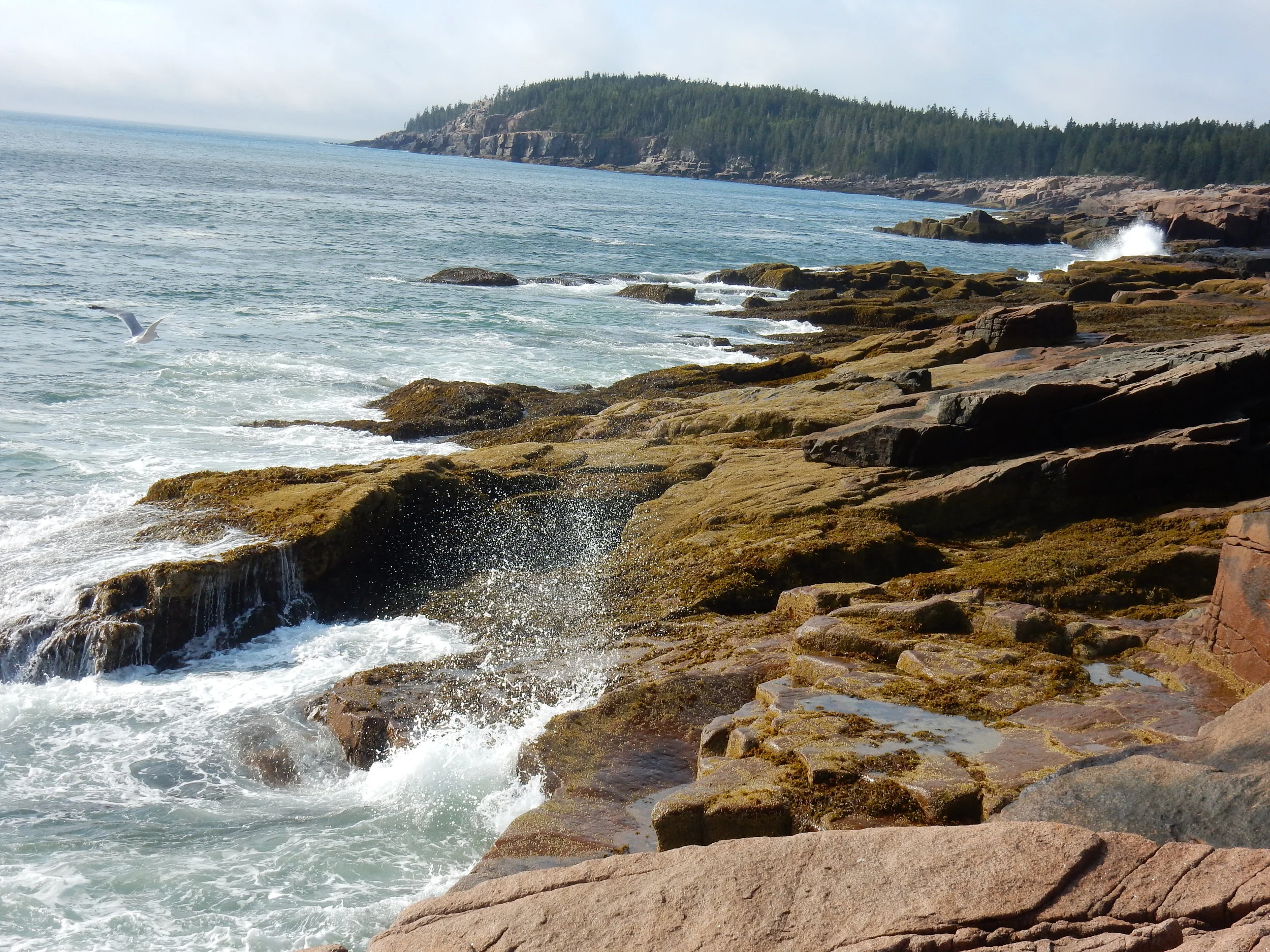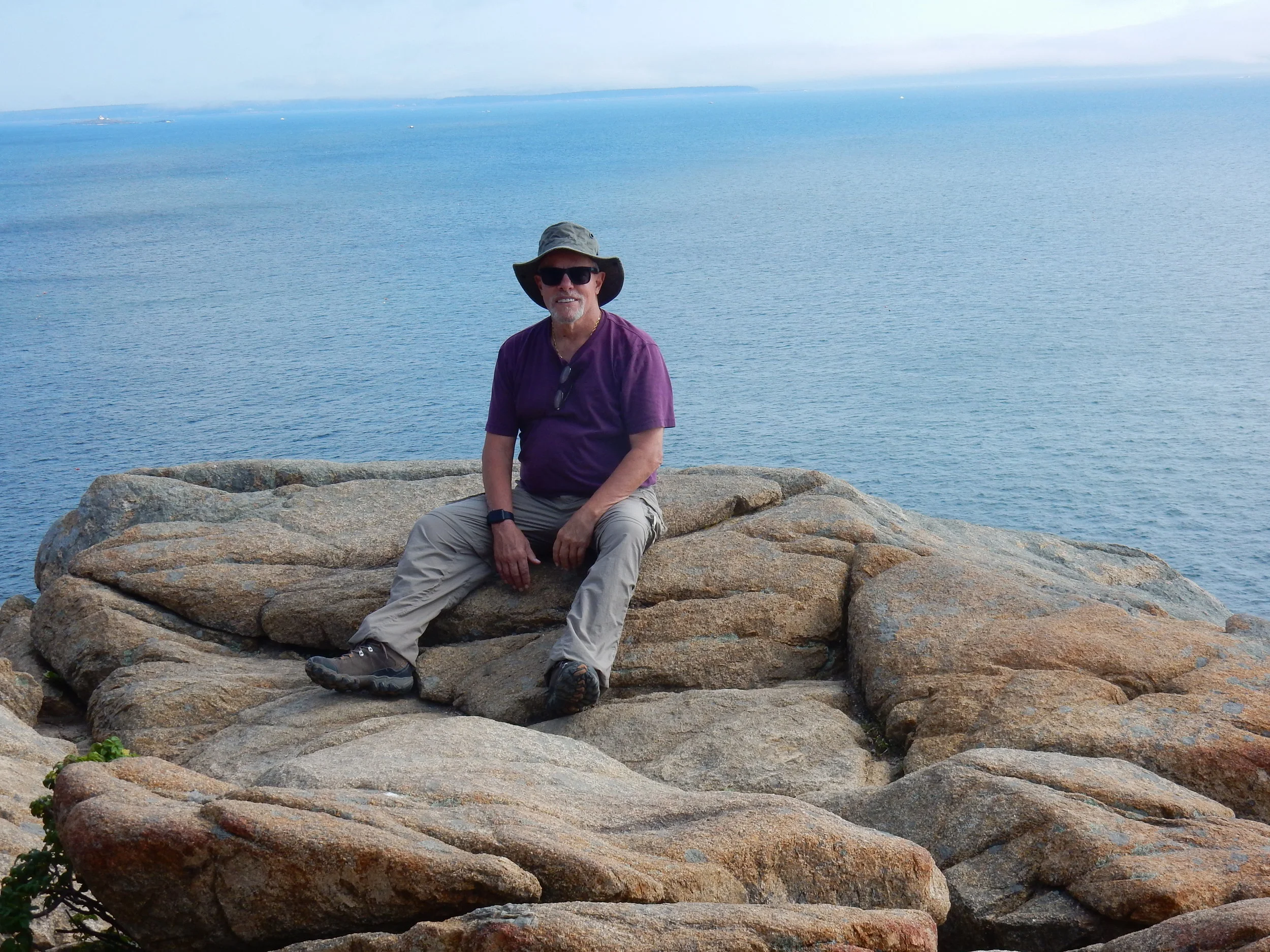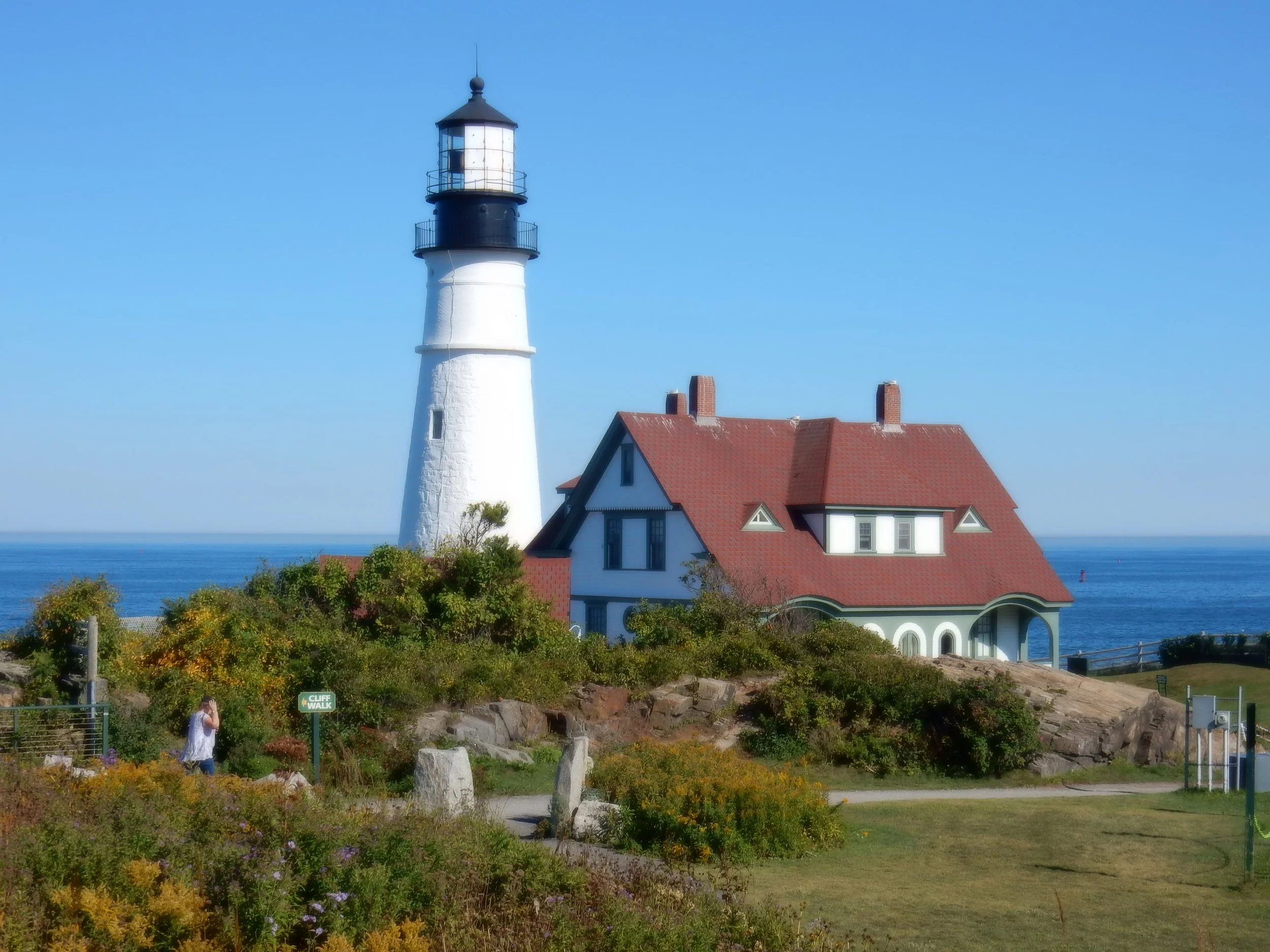Happily saying good-bye to our mouse-infested abode in New Hampshire, we drive through the White Mountains to Burlington, Vermont. We have no idea what to expect from this small city on Lake Champlain, but I like it immediately. The well-maintained buildings are the kind of old that is picturesque and stately, an indication of past wealth and current prosperity. The University of Vermont is here, along with three other colleges, which means the population is young and energetic.
Our travel information tells us that Burlington has two points of interest to offer tourists—the Church Street Market and the Farmers’ Market. So first, the Church Street Market. Parking isn’t easy. When we finally find a place on a side street, the meter demands a quarter per fifteen minutes.
The icy wind coming off the lake makes my nose red and my pace brisk. The Church Street Market is three blocks of walking, no cars allowed. The stores aren’t unusual—The Gap, Banana Republic, Black & White—yet every shop I go into is pretentious and overpriced. There seems to be an inexplicable underlying arrogance. The walkway is clean. A couple of violinists huddle in the doorway of a closed pub; their lines of harmony soar briefly, then are carried away by the biting gusts. I enter a store that sells only jeans and the girl who works there asks how she can help.
“I don’t like skinny jeans or jeans with rips,” I tell her. “And I won’t pay more than a hundred dollars.”
“Oh, well, these are designer jeans,” she says, disappointed that I’m so demanding and opinionated.
“Jeans are jeans,” I tell her, glancing at a price tag of three hundred dollars. “These look exactly like the jeans they have at Macys for seventy-five dollars.”
“Sorry,” she says.
Having irritated her, I leave the shop and join David who, when I’m on a mission, entertains himself with his iPad. We only had three quarters, so time’s running out on the parking. Returning to the car, we go in hunt of where we’ll be staying, the Starlight Inn, which is a Hollywood-themed hotel in the tiny town of Colchester. Hollywood themed: what were we thinking? The woman in the phone guides us there.
The establishment looks new. The units open to small well-kept lawns and a parking lot. The man who owns and manages the place is in his forties and eccentric. He rides around the property on what he calls his “Li’l Nellie,” which is like a three-wheeled Segway. And not only does he own the hotel, but he also owns the three-screened drive-in theatre next door and, beyond that, the Starlight Laundromat. I bet he owns more of Colchester than anyone.
We’re in the Marilyn Monroe Room. The Tom Cruise room is next door. No mice and it’s spacious. We’ll be happy here for a couple of nights. There’s a life-sized cutout of Marilyn on one wall and her most famous photos on the others. Most disconcerting, in the bathroom there’s a poster of Marilyn in off-the-shoulder black lace accompanied by a quote: I don’t mind living in a man’s world as long as I can be a woman in it.This sentiment is so opposed to women’s views today that I can’t help but wonder what to make of it. How would Marilyn fit into our present? Is she no longer relevant? Or is she supremely relevant?
The next morning, after a great night’s sleep, we visit the Farmers’ Market, which turns out to be the best and most extensive I’ve ever seen. The vegetables are inspiring—massive shiny bell peppers, piles of carrots and greens, tomatoes of every size and hue. My sorrow is that I’m traveling and I can’t buy. There are baked goods, too; also pottery, jewelry, and home-brewed ales. We come across a Master Gardeners’ booth and I take David’s picture with his Vermont gardening sisters.
We leave there and make our way downhill to Lake Champlain, where there’s a nice bike/walking path. After an hour’s walk, we return to the market for lunch. I have falafel and David has a chicken curry wrap. We eat as we walk.
Burlington is a good place to hang out and absorb the lively atmosphere. If you’re in the vicinity, I highly recommend a couple of days there. But now we’re off to Manchester, Vermont, which turns out to be one of the loveliest small towns I’ve ever seen. Genteel homes, rolling green lawns, colorful flowers, ancient oaks. It’s the home of Orvis so, just as we did with LL Bean in Maine, a trip to the flagship store is a must. I have no interest in either of these brands. Why can’t clothing be both practical and attractive? But muddy colors, bulky cuts, and clunky boots are for lumberjacks, not for me. Also, plaid flannel—yikes!
In Manchester we have reserved a room in a B&B, and we once again find ourselves at the mercy of a retired person who does everything on the cheap—a bread-only breakfast, thin toilet paper, Wal-Mart pillows, no movie channels. The little woman hovers behind the drinks counter at breakfast, counting how many sugars we put in our coffee and tea, huffing discontentedly when David pours himself a second juice. I’m so over B&B’s.
There’s not much to do in Manchester except walk around and ooh and ah over its beauty. The next morning, before we leave the area, we drive to the summit of Mount Equinox, where there is a spectacular view and a spiritual meditation center that’s maintained by the Carthusian monks who are secluded in their nearby monastery. A history of these monks and an explanation of their austere lifestyle is framed and posted at the entry—and it’s quite touching to think that these men who live in almost total silence and have no possessions spend their days praying for all of us who must confront the evil world on a daily basis. Thanks guys, it means a lot.
Booth after booth of beautiful produce at the Burlington Farmers’ Market
On the wall of our hotel room. It confuses me to think about Marilyn these days.
This gives a pretty good idea of the place. The rooms are in the background.
David and his new Master Gardener friends from Vermont.















